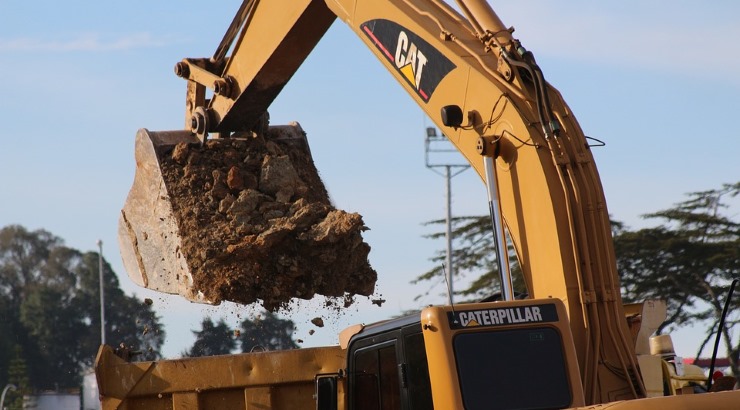Features
5 Popular Road Construction Methods and Techniques
A quick overview of common road construction methods.

Road construction is the installation of soil stabilisers, concrete, asphalt, and other materials on a path to create a surface that vehicles can travel on from one destination to another.
While common types of road construction methods differ based on the nature of the road, every highway project require months or years of planning before work can begin on site.
Road construction methods
Here are the most popular methods of road construction, including asphalt and gravel road construction methodology, murram road construction methods, among others.
1. Asphalt road construction
Asphalt road is made of asphalt – a mixture of fine aggregate particles and bitumen (a sticky dark viscous liquid obtained through unfinished distillation of crude petroleum.
Asphalt road construction methods are very popular due to asphalt roadway’s flexibility and the ability to acquire the shape of the load above it. This helps it to support heavy vehicles.
Asphalt road construction technique starts with the preparation of the subgrade, a process that involves removing any existing vegetation and the topsoil.
The subgrade should be graded to allow the water to run off to the sides or bottom. The ideal slope is a quarter of an inch per foot (0.635 cm per 30.48 cm).
The base soil should be properly compacted, preferably with a 1,361-kg twin drum roller to reduce its volume of water and air – thus creating a harder, denser surface.
The base soil is then covered with crushed rock, whose composition should be rough and jagged. This type of crushed rock is usually called ‘3/4″ minus’ or ‘road-base’ mix.
In the case of clay base soil, 8 inches of crushed rock is recommended.
The next step involves laying the crushed rock mixed with bitumen into the subsoil. Once this is done, you should allow the base to settle for a week.
This will result in a stronger, more naturally settled base.
RELATED: The 7 Most Powerful Road Construction Equipment
Once the road base is firmly in place, hot asphalt is poured onto a bed of heavier aggregate after which it is pressed into it with a steamroller.
When it finally cools down, the asphalt becomes strong enough to support automobile traffic.
Depending on the expected traffic volumes and local climatic settings, asphalt paving can require up to four layers of asphalt.
Thanks to impermeable properties of bitumen, asphalt roads are not easily damaged by rains and they remain motorable even during heavy rains.
2. Concrete road construction
Concrete roads, which are built using a mixture of Portland cement and asphalt, are common in towns. They are designed to support heavy traffic and can last for decades.
Concrete road projects start with the preparation of the subgrade.
This is followed by installation of stationary metal forms (at least 0.2 inch thick and 10 ft. long) – to hold the concrete in place at the proper grade and alignment during construction.
Road builders then mix and lay concrete into the fixed forms after which a finishing machine vibrates and trims it into the required height.
Traverse and longitudinal joints are cut between slabs to prevent cracking that happens due to restrained deformations resulting from temperature and moisture variations.
The concrete surface is now left to cure before opening the road to traffic.
The downside of concrete road construction method is that it is quite expensive. Besides, concrete roads do not bend to support heavy loads – which makes them less durable.
3. Water-bound macadam road construction
The brainchild of Scottish engineer John Macadam, a water-bound macadam road is made of aggregates bound with water and filler material laid on a compacted base course.
Water aids compaction, and as it evaporates, the stones interlock to form a solid surface.
Water-bound macadam roads are considered high quality due to the compacted material.
This method of road construction produces a roadway that is strong enough to support heavy vehicles. It is also cheaper compared to bituminous road construction technique.
4. Murram road construction
Murram roads are a type of road made using laterine soil, commonly known as murram, which is commonly found in tropical regions.
Murram road construction is done by compacting and grading layers of murram to form a durable road surface. These roads are mostly found in rural areas.
5. Earth road construction
Earth road is a type of road whose pavement is made of soil.
To build this type of road, a bulldozer or scraper is driven along the demarcated path to clear the site, remove the top soil and to shape the subgrade.
Once the sub-grade is ready, the soil is dumped into the channel, after which the material is mixed, spread and rolled in several layers – each with a maximum thickness of 10 cm.
The compacted surface is then allowed to dry for a few days before opening to traffic.
As the most basic form of road construction methods, earth roads are common in rural areas, mainly because they do not require specialised skills and huge budgets to build.
One of the drawbacks of earth roads is that they are impassable during heavy rains, which make them slippery and unsuitable for two-wheel vehicles.
The roads are not capable of supporting heavy traffic.
6. Gravel road construction
A gravel road is an improved version of earth road – common in rural and semi-urban areas.
The procedure of building a gravel road is similar to that of putting up an earth road, only that you add a layer of gravel after the soil is fully compacted.
Gravel road construction methods begin by preparing the subgrade. The soil is then compacted to reduce its volume of water and air – creating a harder, denser surface.
A solid base is then created by mixing a binder into the soil using a stabilising machine. Once the base hardens, gravel is then added in layers until you get to the top.
A one-off application of a bituminous surface treatment can help a gravel road to remain smooth and free of cracks and potholes.
Unlike earth road, gravel road is free of dust and does not get slippery during the rainy season. However, this type of road wears off quite easily and cannot support heavy traffic.












